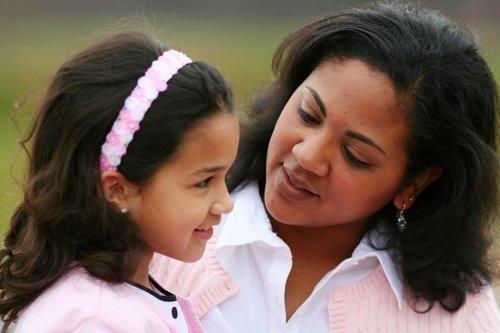
As we move into September and back into the swing of school routines, homework, and after-school activities, I often remind parents to be extra sensitive to the presence of the "overlies" in their children. I use the term "overly" to refer to the state of being over-tired, over-excited, overwhelmed, overly frustrated, over-stretched, and over-the-top with excitability and tension.
Anticipation and the build-up to transitions (and fun holidays too) sometimes leave children feeling a sense of alarm, becoming short of patience and balance. We see a process of adjustment-in-action in our overly cranky and not-so-overly co-operative children, and this becomes our cue to provide conditions that help to facilitate the process of adaptation.
I offer a simple support recipe for parents to consider, which I have found helpful with my own children when they suffer from the overlies. First, keep your finger on the pulse of how your child manages before, during, and after times of transition. When you know what is usual for your children, you’ll have a better sense of how the "overlies" tend to play out for them in transition times, and within your family.
We can support adjustment to transitions when we give priority to time and space with our children. For me, this means simple time spent simply: walks, backrubs, giggles and laughter, meals, stories, trips to the pool, and other non-demanding shared activities which allow me and my children to be together. An increased but gentle focus on the relationship helps a parent to anchor a child who feels that things are suddenly spinning too fast. A child in transition is often a child inside a state of tension and alarm. This is to be expected. Providing an invitation to slow down, express themselves, and receive comfort becomes part of the process of supporting adaptation.
Children are often able to experience and talk about their worries and frustrations during moments of connection when their surroundings are calm and settled. Some children can bring forward what it is that has them concerned and find their way to talk it through. This can help a child to feel the sadness and tears they might be holding deep inside, and find an outlet for the inevitable grief involved with changes and transitions.
Some children cannot find words to express their emotions or are unable to see what it is that alarms them, and we may see increased frustration, upset, tantrums, and tears as tension spills out through their behaviour. Perhaps there will suddenly be new monsters under the bed, new fears surfacing, sudden refusals to do things, and an increased need for reassurances as they follow us more closely around the house. We need to realise that whether our children show frustration and sadness through calm discussion, through increased fears, or through tantrums and upset, they need opportunities to release tension, express emotion, and go through the sometimes noisy and painful process of adaptation. This is how children move towards acceptance. It is about a safe relationship that allows them to hit the wall of realization and come to terms with the fact that things are changing, they can’t change that fact, and change can be really, really hard! And from there might come the tears of futility of things they cannot change, and the letting go that allows them to empty out and make room for the changes.
When circumstances around our children move faster than their ability to keep up, slowing the world down allows them a chance to catch up; we make room to facilitate and support the adaptive process when we give them a break from the pace of the outside world. In this way, we provide invitation and support to help them have their upset, sadness, and tears.
I recall when my children were younger, I would notice restless nights, increased crankiness, less patience all around, voices raised in sibling tensions, nagging worries blown way out of proportion, very tired children, and more than a few tantrums. I would clear my schedule as much as possible in late August, September, and into October for the sake of my son, whose adjustments took longer and needed extra care from me. I would put more time into bedtime stories and cuddles, lots of family movie nights, time for the beach, campfires and s’mores, favourite suppers along with candles to make them special, time swinging on the hammock to invite talks, lots of board games, and basketball in the driveway. This is what I needed to do to anchor the family ship through the transition storm. Soon enough, as details sorted themselves out around classrooms, teachers, and homework routines, I always found the waters becoming a bit calmer and more settled.
For me, half the battle is simply to anticipate and even invite inevitable transition stress, and to remember that many of us (adults and children) experience a similar response to changes in our lives. As parents, we can provide perspective and try not to take the crankiness personally. We may need to be extra generous with our patience and sense of humour, so we can nurture our children through their turbulent times. If we can understand that the "overlies" are part of the process of adaptation, then we can help our children to find their bearings, whatever changes (or challenges) they face.
